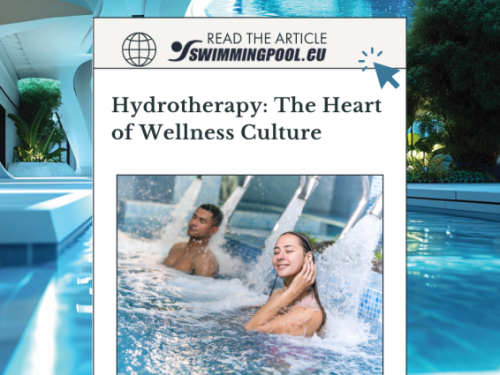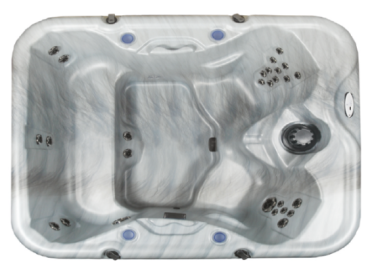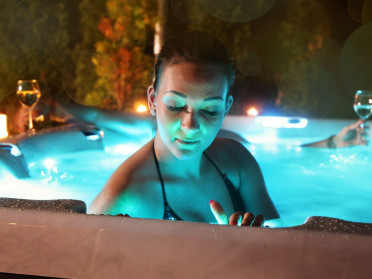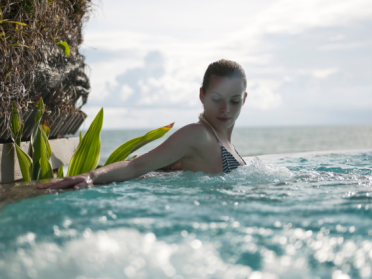
Hydrotherapy: The Heart of Wellness Culture
Category : Wellness
Hydrotherapy, the use of water for therapeutic purposes, has deep roots in European wellness traditions. From historic Roman baths to modern spa and wellness centers, the healing power of water continues to play a central role in European lifestyles
Today, advanced hydrotherapy systems paired with complementary experiences like chromotherapy, balneotherapy, and aromatherapy are redefining wellness culture, delivering a multisensory experience that promotes both physical and mental well-being.
The Core Benefits of Hydrotherapy
Hydrotherapy is recognized for its ability to heal, rejuvenate, and relax through the combination of water temperature, movement, and pressure. It continues to stand out in wellness environments for its effectiveness in addressing a wide range of health benefits:
1. Muscle Recovery & Pain Relief
Hydrotherapy massage systems use targeted jets to relax muscles, alleviate soreness, and stimulate circulation. Perfect for recovering athletes, chronic pain sufferers, or individuals with arthritis
2. Stress Reduction
Hydrotherapy is closely tied to stress relief. Warm water combined with massaging jets promotes relaxation, lowers cortisol levels, and enhances emotional well-being. Aromatherapy and chromotherapy further amplify this effect.
3. Improved Circulation
Spas are increasingly using hydrotherapy as a way to enhance blood flow through targeted pressure points, improving oxygen delivery to tissues and supporting overall health.
4. Enhanced Mobility
Warm water’s buoyancy and massaging power help relieve joint stiffness and improve flexibility, making hydrotherapy a staple in physical therapy and rehabilitation centers.
European Trends: A Holistic Approach to Hydrotherapy
Hydrotherapy is evolving to align with growing wellness trends, emphasizing multisensory integration for a complete experience:
1. Balneotherapy as a Complement
In many spas, balneotherapy is integrated into hydrotherapy setups, creating a robust therapeutic environment. Thermal baths rich in minerals (such as sulfur and magnesium) are paired with massage jets to amplify benefits. Spas often alternate between mineral-rich soaking and hydrotherapy jet massage sessions to detoxify the body and relieve tension.
?Benefit Integration: Balneotherapy works to detoxify and nourish the skin, while hydrotherapy targets muscle relaxation and circulation. Together, they create a complementary wellness approach.
2. Chromotherapy and Aromatherapy
Modern hydrotherapy systems now incorporate chromotherapy (light therapy) and aromatherapy to engage additional senses. Acis and Waterway systems include built-in LED lighting technology, featuring color sequences that calm or energize the mind. For example, blue chromotherapy lighting encourages relaxation, while red lighting fosters energy and alertness.
Aromatherapy dispensers, using essential oils like lavender or eucalyptus, are an increasingly common feature in spas. Combined with hydrotherapy, they elevate relaxation on both physical and sensory levels.
3. Personalized Hydrotherapy Zones
European wellness culture prioritizes customization. Hydrotherapy zones in spas and premium pools offer adjustable jet pressure, water temperature, and ergonomic seating to cater to individual preferences or therapeutic needs.
4. Integrated Wellness Pods
Compact hydrotherapy and balneotherapy setups, sometimes referred to as “wellness pods,” are gaining popularity in residential settings across Europe. These modular units include full-body massage jets, mineral bath dispensers, and immersive lighting—all designed for personal use at home.
Conclusion: Hydrotherapy at the Core of Wellness
Hydrotherapy captures the essence of European wellness culture, combining centuries-old practices with modern technology to deliver a truly transformative experience. By integrating massage systems, balneotherapy, chromotherapy, and aromatherapy into pools and spas, wellness spaces can provide clients with unmatched relaxation, recovery, and rejuvenation.




